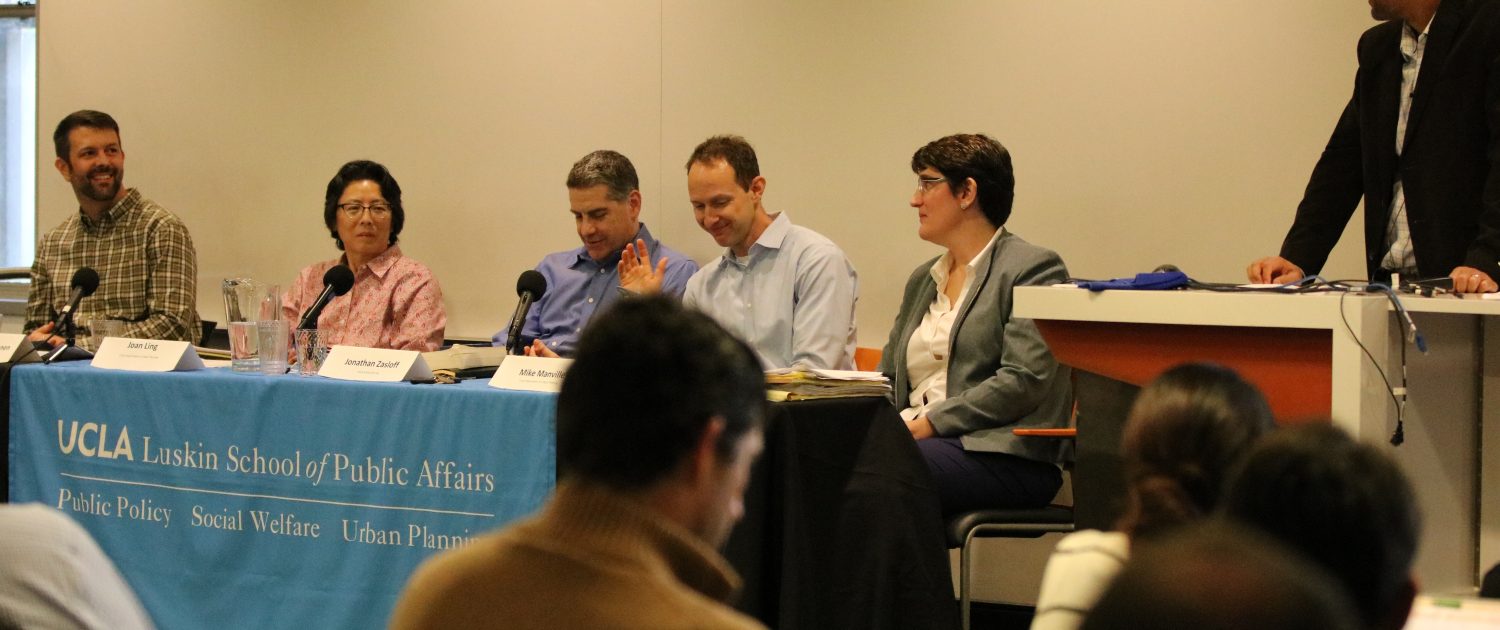‘It’s About Changing the Paradigm’ On ‘A Day Without a Woman,’ the Department of Urban Planning creates space for reflection and dialogue about women’s history, gender and equality
By Stan Paul

Anastasia Loukaitou-Sideris
A century ago, the great-grandmother of UCLA Luskin’s Anastasia Loukaitou-Sideris faced raising and educating her children alone. She and her family had been expelled from Russia following the 1917 revolution, losing their property, and Loukaitou-Sideris told those gathered at an open forum to mark “A Day Without a Woman” that her great-grandfather died on the journey to Greece.
Her great-grandmother persevered, raising one of the first women in the labor force in Greece, Loukaitou-Sideris’ grandmother, who soon was “climbing the ladder” on her way to becoming a manager in the Greek railway system.
Loukaitou-Sideris credits her family, especially her father, with supporting her decision as a young woman to find her own path in the United States, where her academic and professional aspirations led to her becoming a professor of urban planning at UCLA and also the university’s associate provost for academic planning.
“I was a lucky one,” said Loukaitou-Sideris at the March 9, 2017, dialogue for students, faculty and staff at the Luskin School in observance of International Women’s Day.
Other participants shared their own perspectives, recognizing women who had influenced their lives. Attendees also talked about ongoing equality issues and how to break down gender barriers that continue to exist. With gratitude, they recognized the strength, struggle, and perseverance of female role models in advancing women’s rights in society and the workplace.
“I’m here to show solidarity with my fellow women and celebrate the role we play in society,” said Leilah Moeinsadeh, a first-year Master of Urban and Regional Planning (MURP) student.

Michael Lens
Michael Lens, assistant professor of urban planning, added, “I think of … things that women have to deal with that I don’t have to deal with, things my position and status as a man have exempted me from. So, it’s important to reflect on how to treat people, particularly women, with the respect they deserve.”
Lens said much of his life and career have been shaped disproportionately by women in positive ways, explaining that he grew up with his mother in a single-parent household. Mentors, advisers and supervisors in and out of academia — many of them women – “have shaped my career in ways I never expected,” he said.
Joan Ling, lecturer in urban planning, pointed out that challenges remain. “Today reminds me of all the work ahead of us,” she said. “It’s not enough, because it’s not about women being equal to men. It’s about changing the paradigm about how we look at power and influence.”
Ling, a graduate of the urban planning master’s program, added, “And, [it’s about] using different metrics to measure our ability to have control over our lives and live a just life.”
Day Without a Woman from UCLA Luskin on Vimeo.
Ling’s grandmother — raised in China during a time when young girls’ feet were bound to stunt growth — was “crippled because her feet were bound into 4-inch stumps when she was a child.” Ling’s mother didn’t go to school because at that time it was not considered important for a girl to be educated. “I want those things to change,” Ling said. “But beyond that — equality and education and opportunities — it’s really redefining how we run the world.”
The discussion also covered political issues such as gender-neutral restroom legislation across the nation and the day-to-day challenges of being a mother and keeping up with the requirements of a Ph.D. program. Other topics included the logic of planning buildings to include lactation rooms in the workplace, as well as discussion of housing, jobs, women of color, transgender women and the role of students in dismantling barriers.
“An international day of recognition is a great way to ignite conversation, but something as important as gender equality should not be designated to a discussion once a year, it must be ongoing,” said Alexis Oberlander, urban planning graduate adviser, who helped organize the event and served as moderator. “I was excited by the ideas the students presented, and I hope those ideas invigorate more dialogue and action.”














